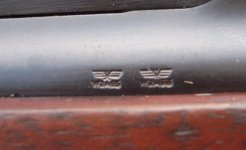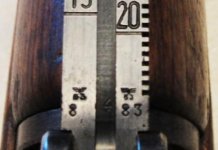Generally, ordnance spares carry the ordnance code and waffenamt that inspected the component (actually inspected under his authority, which often was conducted by lot inspection as was the normal practice in US ordnance inspection); simply that parts had to stand alone in the system and therefore had to have its individual identification. Seemingly this wasn't always the case, very small or simple components sometimes only have a small waffenamt, but on more significant items (bolt bodies, bolt components, RS components) this is almost always the case, especially if they are large enough to carry markings. Possibly/probably some of these requirements were loosened on less critical parts, like the pretty uniform RS sleeve and scale, but the base either earlier or thought more critical(?) No way to know, but WMO made the vast majority of RS ordnance spares**, though Ernst Pack (Soligen) and BLM made some sleeves during the war (several other ordnance spares like bayonet lugs out of the Solingen area also, possibly EP). Really there is no way to date these parts other than to say late 1930's, but if specific to the G98 then certainly 1939 or earlier.
In this case the RS sleeve and scale lacking the ordnance code probably means they are later than early, possibly directly supplied to Spandau? Hard to say, something like this is unprovable or unknowable.
**this after Simson was marginalized from military sales (which was probably in 1933-34, you do see e/6 with the Simson trademark in 1933 and 1934, though it seems BSW didn't really get back in the game until 1935 with e/4, which interestingly sometimes shows the Simson logo combination) many other makers made specific ordnance spares, ERMA another big supplier, BLM another, but WMO was the most diverse and important. Later, during the war, WMO would stop making such parts and that is where ERMA, EP and Astrawerke (and others) probably come in. By 1939 WMO was way too important to piddle with such parts...
 Sorry couldn't help myself
Sorry couldn't help myself










